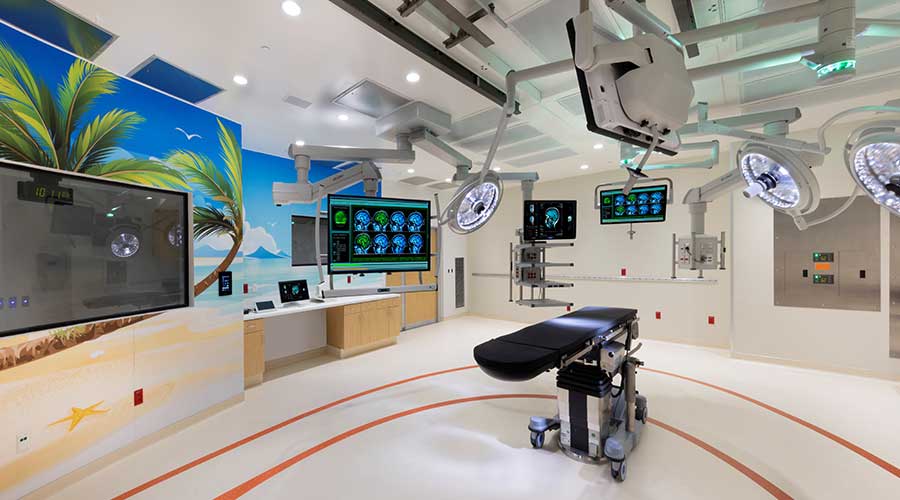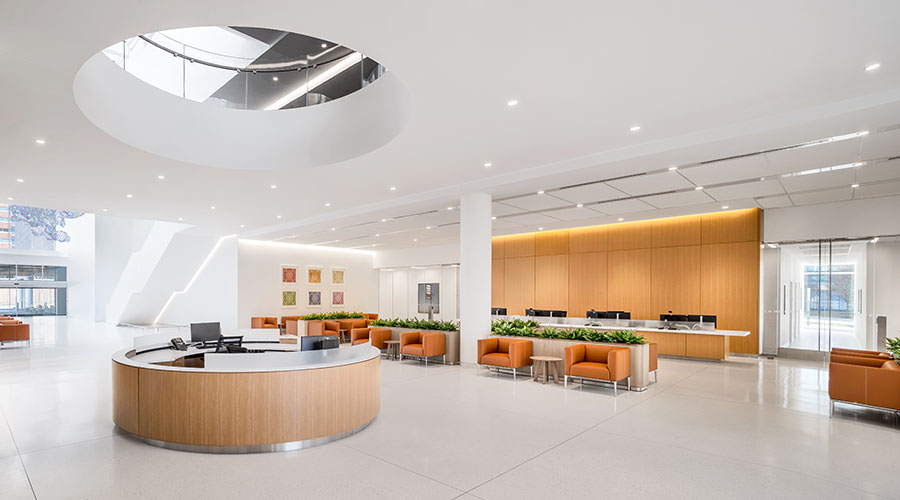In the healthcare sector, advancements in technology and shifts in patient needs are constant. The challenge lies in developing facilities that are both forward-thinking and cost-effective. With the understanding that about 90 percent of a building's costs come after it has been built, focusing on long-term efficiency and flexibility is crucial. Senior healthcare leaders have a lot on their plate: they need to keep an eye on costs, make sure buildings can adapt over time, and stay on top of evolving technology and new treatment modalities. Here are nine strategies and insights into getting these projects right, covering everything from setting clear goals to ensuring buildings are energy-efficient and can change as needs evolve.
1: Establishing Clear Goals and Expectations
Successful healthcare capital projects have clear, realistic goals, including cost management, design aesthetics and future technology integration. Early and transparent discussions on budget and design priorities that focus on energy-efficient, patient-friendly environments are essential. Planning for often overlooked areas like service areas and staff rooms is also important. Effective communication throughout the project is vital to accommodate changes in stakeholders and management and ensures the project adapts and aligns with evolving needs and goals. This approach ensures that projects are realistic, flexible, and responsive in contributing to their success.
2: Design Impacts on Staff Well-being and Efficiency
Healthcare facility design and staffing challenges are profoundly connected, requiring modern healthcare capital projects to create environments that enhance staff well-being and operational efficiency. These environments integrate elements like natural light, ergonomic workspaces and intuitive layouts that enable efficient patient care. This approach aims to improve staff retention and satisfaction and acknowledges the role of staff well-being in delivering superior patient care. Adaptable and flexible design also allows facilities to evolve with the changing staff and technology needs, ensuring long-term satisfaction and efficiency. By prioritizing these design elements, healthcare leaders can address staffing challenges, fostering a supportive and efficient environment for staff and patients.
3: Cost Management Strategies
Cost management in healthcare projects is complex, requiring careful planning and budgeting to manage rising construction costs and pursue growth efficiently. It is crucial to start with a clear, realistic budget that anticipates cost escalations and possible design or schedule changes. Early discussions about cost escalation in the construction market can help stakeholders proactively anticipate and address potential challenges. Incorporating flexibility into designs from the beginning—such as constructing a floor and leaving it as unfinished shell space—allows for affordable future expansions. Data-driven decision-making during design helps manage costs and ensures projects stay within budget during construction.
4: Design Flexibility and Efficiency
Designing flexibility in healthcare projects has emerged as a key driver to effectively meet the dynamic needs of the industry and its patients. Focus on creating spaces that can adapt to new technologies and evolving service offerings without extensive renovations. Design strategies include modular elements for easy reconfiguration and multi-purpose spaces for efficient resource utilization. By prioritizing adaptability, healthcare leaders can ensure their facilities are prepared to respond to future trends and challenges, maintaining operational efficiency and patient care quality.
5: Innovations Shaping the Future of Healthcare Facilities
Integrating cutting-edge technologies such as digital twins, artificial intelligence (AI) and intelligent sensors is revolutionizing healthcare facilities. These innovations offer unprecedented opportunities to enhance building maintenance, operational efficiency and quality of patient care. Senior leaders must stay abreast of technological advancements to ensure their facilities are equipped to deliver superior care. By integrating these technological and design innovations, healthcare leaders can pave the way for more sustainable, efficient and future-ready facilities.
6: Sustainability and Net Zero Goals
The drive towards sustainability and achieving net-zero carbon emissions is reshaping healthcare facility design and operation. Investments in renewable energy sources, energy-efficient designs, and sustainable materials contribute to environmental conservation and promise long-term operational savings. In aiming for net zero, a strategic focus on building performance has shifted towards decarbonization, with a lesser emphasis on traditional rating systems and more on actual energy use reduction. Consider adopting strategies such as optimizing the building's orientation, utilizing passive solar power, and incorporating large windows for natural lighting to reduce reliance on artificial lighting and air conditioning. This approach, focusing on energy use reduction and the adoption of renewables, is crucial for healthcare facilities aiming towards net zero. Leaders can also incorporate electrification in place of systems traditionally driven by fossil fuels. Electrification will impact the utility grid and the building infrastructure but maximize the impact of renewable sources.
7: Resilience and Adaptability in Healthcare Facilities
In an era marked by climate change and health crises, the resilience and adaptability of healthcare facilities have become paramount. Facilities must be designed with the flexibility to respond to a range of emergencies, from natural disasters to pandemics, ensuring uninterrupted patient care. This includes robust infrastructure that can withstand extreme weather events and adaptable spaces that can quickly transition to meet urgent medical needs. By prioritizing resilience planning, healthcare leaders ensure that their facilities are prepared to face unforeseen challenges, maintaining operational continuity and safeguarding patient care against the backdrop of a rapidly changing global landscape.
8: Cultivating Knowledge Sharing in Facility Development
Knowledge transfer is a key factor in healthcare facility development and management, as it allows project teams to share critical insights, from innovative solutions to best practices. This information exchange is crucial for informed decision-making. As projects evolve, a robust knowledge transfer process is also necessary to preserve project knowledge through changes in stakeholders and senior management, ensuring the project's integrity and adaptability. Knowledge transfer fosters a culture of continuous learning and improvement and enhances the success and resilience of healthcare projects, making them more adaptable to future healthcare needs.
9: Leveraging Efficiency for Competitive Edge in Healthcare
Operational efficiency is essential in healthcare facilities, financial health and quality care. Focusing on energy efficiency, improving staff workspaces and prioritizing patient-centered care allows healthcare leaders to leverage efficiency as a competitive advantage. This strategy enhances the financial bottom line and elevates patient care standards. Adopting energy-efficient systems and practices lowers operational costs and positions a facility as environmentally responsible, attracting patients and staff who value sustainability. Additionally, positive staff environments with good ventilation, access to natural light, and comfortable break areas are key to retention and recruitment.
Prioritizing
As we look to the future, the successful development of healthcare capital projects will depend on a balanced integration of innovation, sustainability, efficiency, knowledge transfer and operational cost considerations. Senior healthcare leaders play a pivotal role in steering their organizations towards these objectives, ensuring that healthcare facilities are well-positioned to meet the challenges and opportunities of the coming years. By embracing change and prioritizing these key drivers, healthcare leaders can ensure their facilities remain at the forefront of patient care excellence.
James D. Ferris is chief operating officer at TLC Engineering Solutions, headquartered in Orlando, Fla. He can be reached at James.ferris@tlc-eng.com.

 Should We Be Testing Toilet Water in Patient Restrooms?
Should We Be Testing Toilet Water in Patient Restrooms? Healthcare Union Petitions for Increased Staff Safety at HCA Florida Hospitals
Healthcare Union Petitions for Increased Staff Safety at HCA Florida Hospitals HGA Announces Completion of the Jeffrey and Patricia Cole Pavilion
HGA Announces Completion of the Jeffrey and Patricia Cole Pavilion Healthcare Facilities Look to Future-Proof Facilities
Healthcare Facilities Look to Future-Proof Facilities Yale New Haven Health Experiences Data Breach
Yale New Haven Health Experiences Data Breach